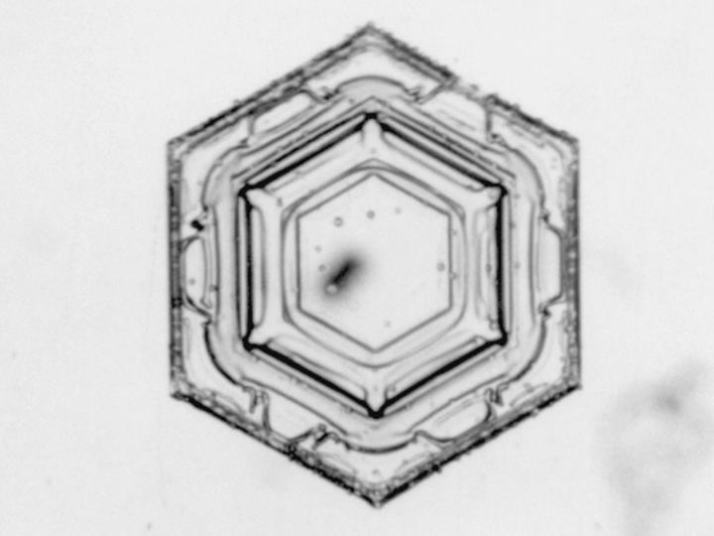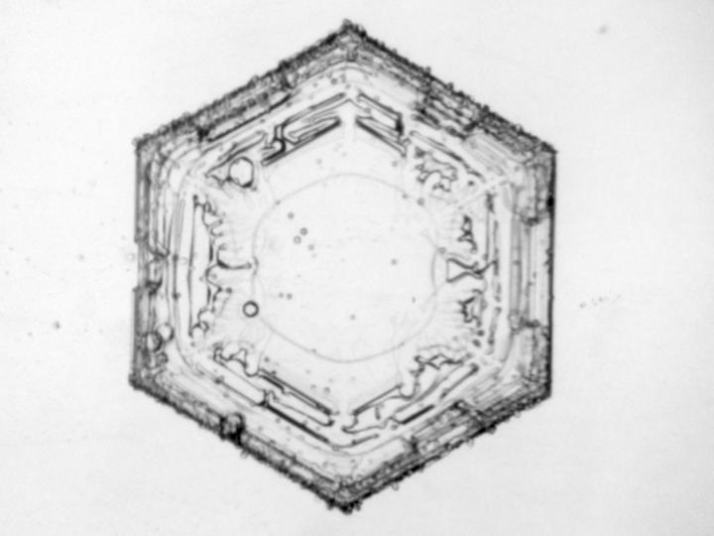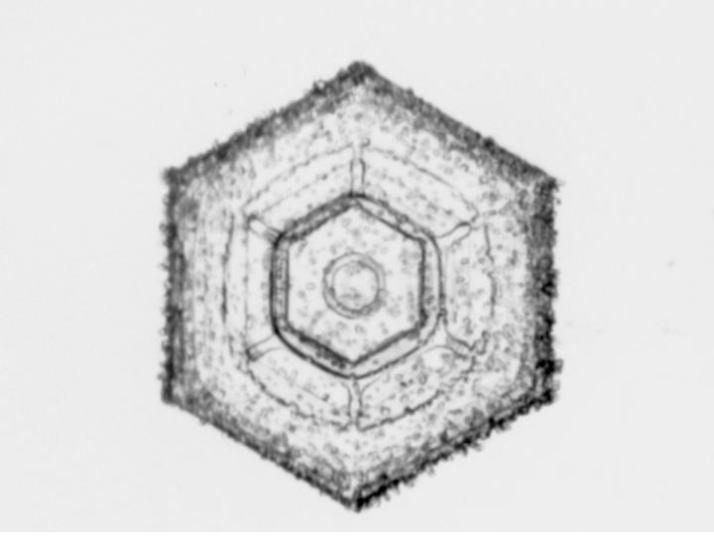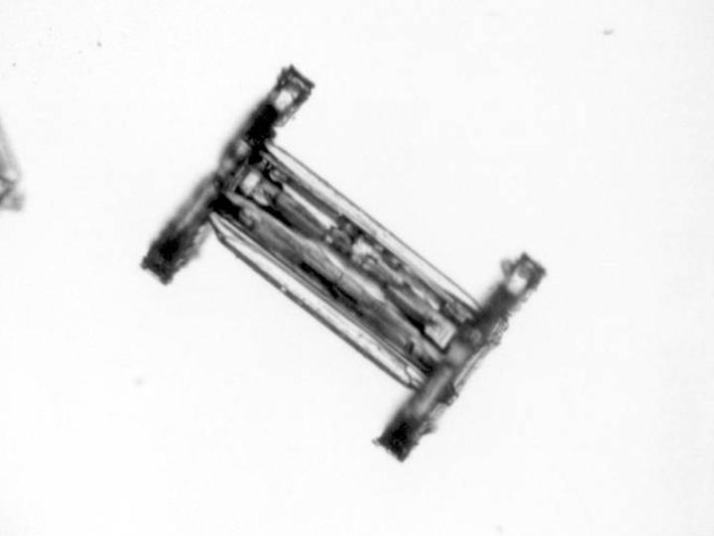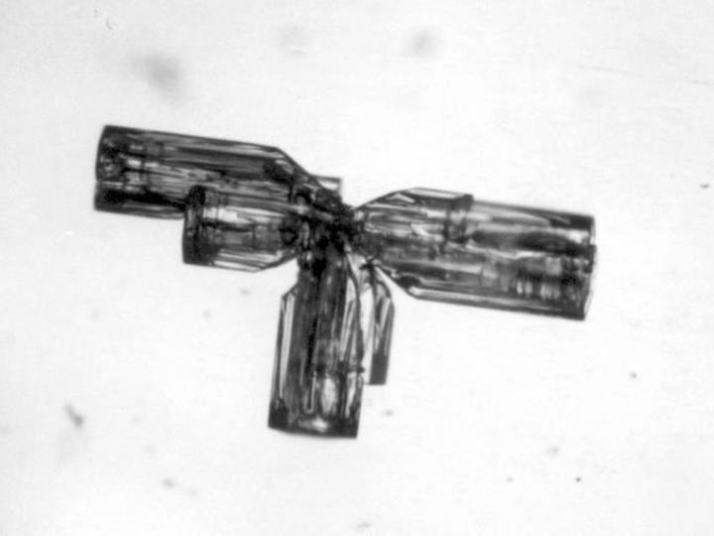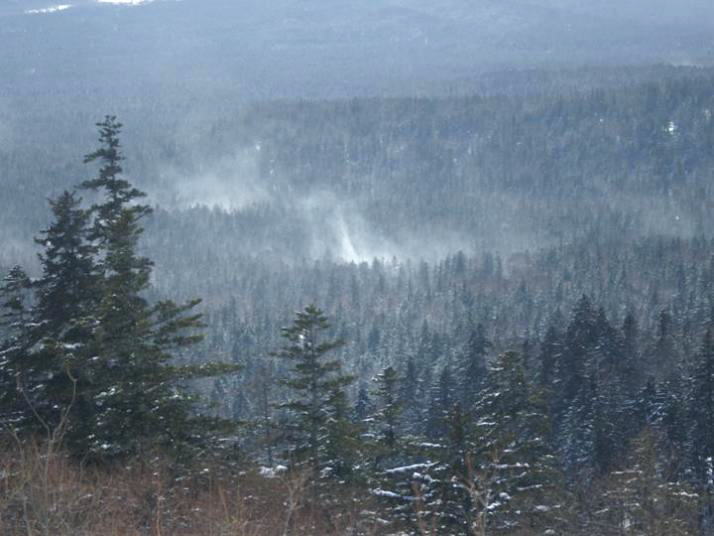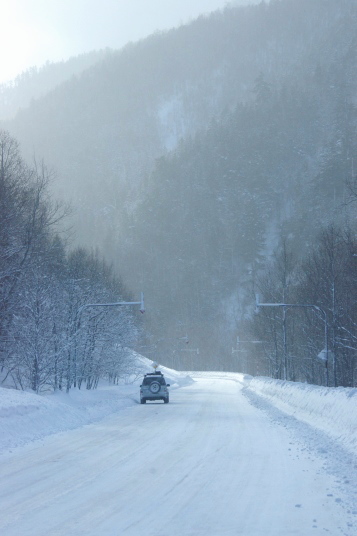Crystals Observed in a Snowstorm
Snow with a warm front
In March, temperatures are much warmer and spring is just around the corner. During this time of year, the winter monsoon weakens, so there is less opportunity for a large snowfall. Instead, low pressure with fronts arrive and bring snow. Since the warm spring air is pushing in close, snowfall at this time of year often turns to sleet or rain.
It is nearing the end of the season for observing snow crystals. However, on the day when the snow clouds associated with a warm front were approaching, I checked the weather data to find a place with slightly cooler temperatures and drove out to observe snow crystals.
The structure of the warm front and precipitation mechanism 1)
On this day, we decided to conduct late-night observations at the top of a mountain pass in the interior. The wind was strong at the top of the mountain pass, and the snow was beating against me in pieces, so I had to set up my tent to observe the snow crystals. However, the snow crystals I observed were certainly different types from those of the winter monsoon.
At this time, dendritic crystals were almost non-existent, and the snow was mainly ice chips falling with strong winds, with small simple plates and columnar crystals (in the shape of a column with plates or a combination of bullets) mixed in characteristically.
The large dendritic crystals are very beautiful and symbolize the image of snow, but these simple plates and column crystals also have very interesting shapes and are so strange that it is hard to believe that they are natural formations.
In general, snow crystals should be observed at temperatures below −3°C (preferably below −5°C) 2), 3). The reason is that the crystals will melt if the temperature rises only slightly due to heat from one's breath, the heat of one's hands, or the light of a microscope, etc. At this time, the temperature was around −4°C near the top of the mountain pass, which was just at the limit of the temperature that could be observed.
The figure at the top of the page is a simplified drawing of the cloud structure associated with a warm front, based on the “Dictionary of Snow and Ice” (Asakura Shoten) 1). According to the explanation, clouds associated with a warm front are called stratiform precipitation clouds, and the cloud formation mechanism is slightly different from that of snow clouds associated with the winter monsoon (convective snow clouds). There, warm air rises above cold air in a stable state, which causes the formation of stratiform clouds. In clouds formed in this way, snow crystals also grow slowly, which seems to be characterized by the appearance of crystals that are mainly simple plates or columns.
Indeed, in this observation, I could recognize the type of snow crystals based on the simple plates or columns characteristically as indicated above photographs, that is "small simple plate", "column with plates", or "combination of bullets". A few days before this event, there was another snowfall associated with a warm front. At that time, I also observed beautiful snow crystals with the basic shape of plates (see below). Although snow crystals that fall from clouds associated with a warm front are not large and spectacular, many of them seem to have a mysterious appearance when magnified under a microscope.
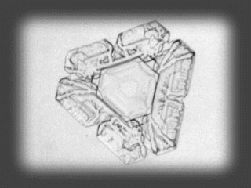
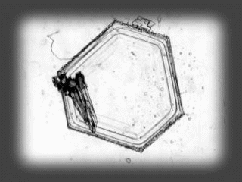
Scalene hexagonal snow crystals
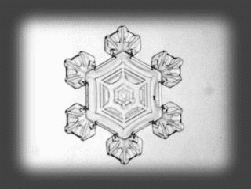
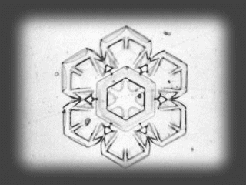
Plate with sector extensions
A snowstorm of spring
Observing snow crystals is done outdoors in the cold of winter. I take the microscope outside and, without any particular physical exertion, I sit still and breathlessly pick up the crystals, which are then repeatedly magnified for observation. For this reason, I warm myself up in the room (or in the car) and then venture out into the open air in temperatures of −5 to −10°C (sometimes −20°C), repeatedly returning to the warmth of the room when my fingertips begin to get cold and I have reached my limit.
Of course, when there is no wind and the crystals are in good shape, I do not mind the cold so much and concentrate on taking photographs and making replicas for an hour or two. However, in most cases, the activity time is limited to about 30 min once I go outside before returning to warm myself up.
Therefore, it is important to work quickly when making observations. However, even if I carefully pick up a single crystal with a brush and place it on a glass slide, I may find that some of the branches are broken when I look through the microscope. In this case, I will have to start the process over again from the point of looking for a good crystal. In windy, snowstorm-like weather, I set up a tent and observe in it, but just as I am about to take a photograph of a beautiful crystal in the field of view of the microscope, a gust of wind unexpectedly blows in and blows away the crystal I am looking for. If the gust is very strong, the tent will lift (even though it is weighted down beforehand) and the wind will carry it away, and I will have to hold it down and protect my equipment. At that time, it is very difficult to take photographs.
Here are some of the snow crystals I was able to observe during the snowstorm.
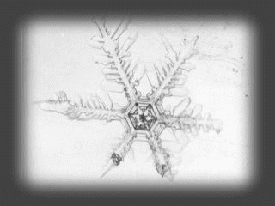
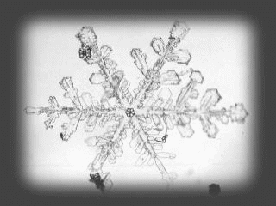
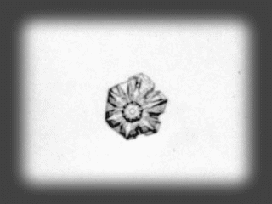
The three photographs indicated above are of snow crystals with broken symmetry. All crystals are hexagonal, but the symmetry is broken because of the different lengths of the branches. Not only in a snowstorm but in any kind of snowfall, when two crystals are attached and fall, the six branches cannot grow evenly and the symmetry is broken. In the case of this photograph, the strong winds in the snowstorm probably caused the branches to fail to grow evenly, resulting in this shape.
The two photographs indicated below are snow crystals with some symmetrical shapes, although not perfect. In snowstorms, crystals are often broken during the fall or stuck together with broken parts of other crystals, but in rare cases, I could find well-formed crystals like the ones in the photographs below.
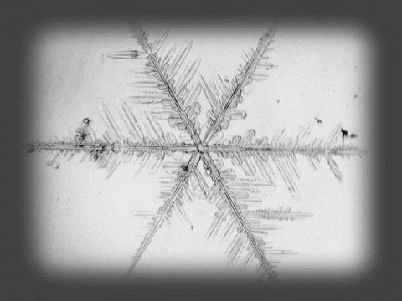
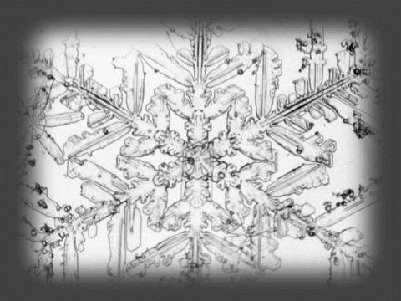
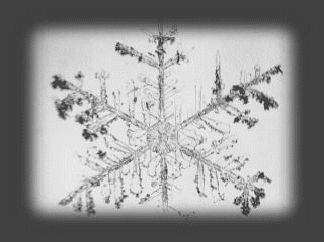
(Plate with dendritic extensions)
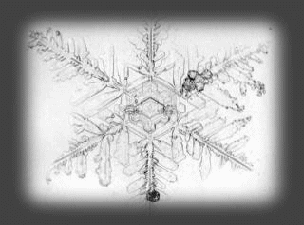
Another snow crystal found in a snowstorm (Plate with dendritic extensions consists of two components)
A plane crystal with severely irregular symmetry observed in a snowstorm
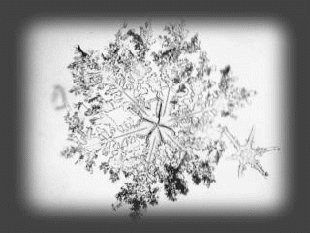
References
1) 村上正隆,2005:降雪雲と降雪分布(降雪の気象).雪と氷の辞典,(社)日本雪氷学会監修,朝倉書店,59-80.
2) Nakaya, U., 1954: Snow Crystals, Natural and Artifical. Harvard University Press, Cambridge, 510pp.
3) 油川英明,2005:雪結晶の観測.雪と氷の辞典,(社)日本雪氷学会監修,朝倉書店,687-691.
